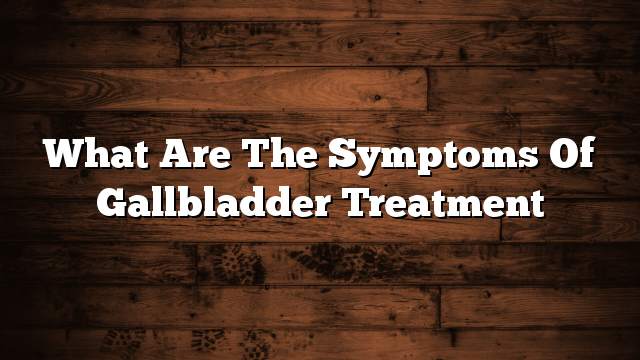Gallbladder
Is a longitudinal bag, shaped like a pear plant, located under the liver, and stored bile extract produced by the liver, which is necessary in the process of digestion of fat in the body, and the length of the gallbladder between 7 and 10 cm, and the width is between 2 and 3 cm, It can absorb about 50 milliliters of bile, and the saliva has three main parts, the bottom, the body and the neck. It extends to the bile duct, which is 3 to 4 cm long, and carries the bile to the bile duct. Before eating meals, the gallbladder is filled with the yellow juice. After meals, it is empty and flat, and in response to many of the body’s transmissions, the gallbladder stored in the bile duct, and then to the bile duct, then to the twelve, And digest them properly. The process of removing gallbladder surgically from the most recent surgical operations, and do not cause any problems in digestion or health complications in healthy people, apart from the increased exposure to diarrhea and impaired digestion of fat.
Biliary diseases and associated symptoms
Most of the gallbladder diseases are caused by irritation of the lining, which is called gallbladder inflammation. This inflammation usually originates from the presence of stones that block the bile ducts, leading to the accumulation of yellow matter in the gallbladder. The gallstones are formed when the bile constituents such as cholesterol, bile salts and calcium form particles Solid, ranging in size from small to the size of a grain of sand, and large may reach the size of a golf ball. It may also develop when a gallbladder disorder prevents it from completely emptying its contents from the bile.
There are many factors that may increase the chance of getting gallstones such as obesity, eating high-fat diets, suffering from diabetes, and taking estrogen-containing drugs and others. The most common diseases that may affect the gall bladder are as follows:
- Gallbladder inflammation: It is the most common gallbladder disease, and has two acute and chronic types. Acute type is usually caused by gallstones, and may be caused by tumors or other conditions. The patient suffers from pain in the upper right or middle of the abdomen. This pain usually begins after eating, and may vary in severity as well as the possibility of feeling pain in the right shoulder, and may also be accompanied by high body temperature, nausea and vomiting, as well as yellowing of the eyes and skin, in addition to the color of stool. The chronic type occurs after suffering repeated episodes of acute inflammation, as the result of the contraction of the gall bladder, and then weaken the ability to store and release bile.
- Non-peptic gallbladder diseases: It is caused by other problems, such as the presence of imbalances in the muscles of the gallbladder or in the valves located at the end of the channels, and the patient suffers from pain similar to the pain of gallbladder inflammation, usually comes after eating, especially high-fat, and may be accompanied by the feeling of bloating and frequent abdominal gases, and suffering from nausea And the patient’s stool may become light.
- Inflammation of the bile ducts: The disease gets bile duct irritation, followed by several scars and thus destruction. The cause of the disease is not yet known, and people with hepatotoxicity and spleen may suffer, as well as lack of appetite and weight loss.
- Gangrene gallbladder: This occurs when the gallbladder stops functioning due to lack of blood supply. It results from many diseases, such as gallbladder infection, bruising, surgery, or diabetes, or blood and circulatory diseases. Such as pain in the right side of the abdomen, high body temperature, nausea and vomiting, bloating, frequent abdominal gases, low blood pressure, and loss of concentration.
- Oncology: Malignant tumors are rare, with symptoms similar to those of gallbladder disease, and benign tumors are usually small in size and do not cause any symptoms.
Treatment of gall bladder disease
The gallstones and inflammation resulting from the most common gallbladder disease, and many methods of treatment, and depends on the choice of method on several factors, such as the age and health of the patient, and the frequency of pain and severity, and if accompanied by other symptoms, in addition to the complications resulting from it. Doctors usually remove the gallbladder, either by surgery, or by using a tool called laparoscopy, which is now more commonly used for fewer complications and only for making small holes in the abdomen. This process has also proven successful in treating malignancies and benign tumors.
If the stones are in the common bile duct, doctors may conduct the so-called ERCP, a laparoscopy based on inserting a tube from the mouth to reach the bile duct’s confluence of the twelve. In addition to its role in diagnosing the cause of the disease and the location of the gallstone, Many cases in the healing of symptoms caused by the stone, but they do not remove them completely.
There are also many gallstones, such as Ursodoxicol Acid, which can dissolve small-sized stones and succeed in 40% of cases, as well as methyltetriputyl ether, which is injected directly into the gallbladder. Using acoustic waves, but their use has decreased significantly in recent years.
